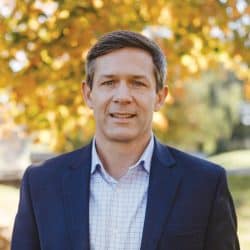The Mission Imagination
By Aaron M. Kauffman
“Behold, I am making all things new.” Revelation 21:5 (NASB)
The Christian movement has been innovating from the very beginning. As Ted Esler reminds us in his book, The Innovation Crisis, schools, modern science, hospitals and human rights all arose from the efforts of Christians to live out a biblical worldview.
Yet such innovation goes beyond mere human imagination. In the book of Acts, we see how the movement Jesus launched quickly moves beyond Jerusalem and begins to incorporate people from different languages, ethnicities and religious backgrounds. The Holy Spirit takes the church places it never thought possible – or even desirable. Mission imagination is Spirit imagination.
How is the Holy Spirit continuing to lead us into new horizons in mission today? I’ll name just two.
First, the “receivers” of mission have become the senders. According to the World Christian Database, 66% of Christians today live in the places that had the fewest Christians a century ago – Africa, Latin America, Asia and Oceania. The mission movement is not far behind. Nearly half (47%) of the missionaries serving cross-culturally today come from these continents. The Majority World is becoming the majority mission force.
How is VMMissions responding? By leveraging our resources to get behind what God is doing. Almost 30% of the workers we support come from the Majority World. A growing edge for us is cultivating sustainable financial support for these global workers. In some cases, we match giving from their sending communities with funds from North American partners. In other cases, we prioritize bi-vocational ministry, helping workers find jobs in the marketplace or engage in business development to generate revenue for ministry. We continue to learn.
Second, the mission field has come home. Pew Research Center reports that the percentage of Americans calling themselves Christians has fallen to 65%, while those identifying as atheist or agnostic is up to 26%. This is particularly true among young adults, less than half of whom would say they are Christians (49%).
In an increasingly secular context, what does mission look like? One step we are taking is to invest in renewal. The Soil and The Seed Project, led by Seth Crissman, is helping families in over 20 denominations across 30 states to engage scripture in fresh ways through music and “little liturgies” accessible to kids and grownups alike.
Alternatively, the SLAQ (Servant Leader Quest) program, led by Ken Wettig, focuses on a few to reach the many by discipling a dozen teenagers annually through adventure, service and intergenerational “crucial conversations.” The vision is that mission will emerge from the renewed faith of the next generation.
Innovation in mission opens up new possibilities and creates new challenges. Yet we believe the future is secure for a church that keeps in step with the Holy Spirit’s lead.
